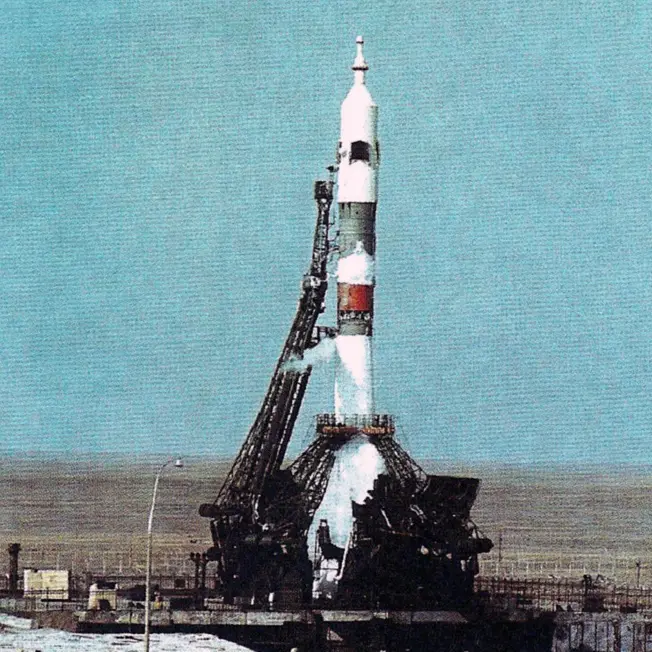Soyuz 5
Launch Success
Liftoff Time (GMT)
07:04:57
Wednesday January 15, 1969
Mission Details
Launch Notes
First crewed docking made by the USSR. First EVA made from the Soyuz spacecraft. First crew transfer by EVA. The cosmonaut named the spacecraft Байкал ("Baikal").
Soyuz 5
Soyuz 5 was a Soyuz mission which docked with Soyuz 4 in orbit. It was the first docking of two crewed spacecraft of any nation, and the first transfer of crew from one space vehicle to another of any nation, the only time a transfer was accomplished with a space walk – two months before the US Apollo 9 mission performed the first internal crew transfer. The flight was also memorable for its dramatic re-entry. The craft's service module did not separate, so it entered the atmosphere nose-first, leaving cosmonaut Boris Volynov hanging by his restraining straps. As the craft aerobraked, the atmosphere burned through the module. But the craft righted itself before the escape hatch was burned through. Then, the parachute lines tangled and the landing rockets failed, resulting in a hard landing which broke Volynov's teeth. This is Soyuz's 11th flight, and 4th crewed flight. The Soyuz is a Soviet crewed spaceship, developed to made manned lunar missions. This version called 7K will fly 4 times on the giant launcher N1, and several tens of times on Proton to fly over the Moon, which will be successful during the mission Zond 4. Soyuz will become the first spacecraft to transport living beings to the Moon during the flight of Zond 5, with two turtles. Subsequently, it is adapted to low orbit and will fly on the Soyuz launcher to serve the Salyut and Mir stations and the ISS.
Low Earth Orbit
1 Payload
6,585 kilograms
Launch Site
Stats
Soyuz
13th
Mission
2nd
Mission of 1969
OKB-1
379th
Mission
5th
Mission of 1969
1969
5th
Orbital launch attempt

